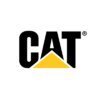Business Process Manager
Business Process Manager Interview Questions and Answers

Asked in Cyient

Q. How do you manage process activities in a large project?
Process activities in large projects are managed through careful planning, communication, and monitoring.
Create a detailed project plan with clear timelines and milestones
Assign specific tasks and responsibilities to team members
Establish regular communication channels to ensure everyone is on the same page
Monitor progress and adjust plans as needed
Use project management software to track tasks and deadlines
Ensure that all team members are trained on the project's processes a...read more

Asked in Cyient

Q. Which quality tool do you prefer, and can you share your implementation experience with it?
I prefer the Six Sigma methodology as a quality tool.
Six Sigma is a data-driven approach to quality improvement.
I have implemented Six Sigma in my previous role as a Business Process Manager.
We used DMAIC (Define, Measure, Analyze, Improve, Control) methodology to identify and eliminate defects.
Six Sigma helped us reduce process variation and improve customer satisfaction.
We also used statistical tools like control charts and process capability analysis to monitor and control...read more

Asked in Cyient

Q. What are the related process metrics for a large project?
Related process metrics for large projects include cycle time, lead time, throughput, and defect rate.
Cycle time measures the time it takes to complete one unit of work
Lead time measures the time it takes to complete a task from start to finish
Throughput measures the amount of work completed in a given time period
Defect rate measures the number of errors or defects in the output of a process

Asked in Cyient

Q. What was your role in CMMI implementation in your previous organization?
As a Business Process Manager, I led the CMMI implementation in my previous organization.
I was responsible for identifying the gaps in the existing processes and defining the roadmap for CMMI implementation.
I conducted training sessions for the team members to educate them about the CMMI framework and its benefits.
I worked closely with the process owners to define and document the processes as per the CMMI guidelines.
I conducted regular process audits to ensure compliance wit...read more

Asked in Cyient

Q. What is Pareto chart? Where we are using?
Pareto chart is a graphical representation of the 80/20 rule, used to identify the most significant factors in a process.
It is a bar graph that displays the relative frequency or size of problems in descending order of importance.
It helps to identify the vital few factors that contribute to the majority of problems in a process.
It is used in quality control, project management, and decision-making processes.
Example: A Pareto chart can be used to identify the most common defec...read more

Asked in Cyient

Q. What is FMEA? Where should we use?
FMEA stands for Failure Mode and Effects Analysis. It is a systematic approach to identify and prevent potential failures in a process or product.
FMEA is used to identify potential failures in a process or product and their effects on the end user.
It helps in prioritizing the potential failures based on their severity, occurrence, and detectability.
FMEA can be used in various industries such as manufacturing, healthcare, automotive, aerospace, etc.
It can be used in the design...read more
Business Process Manager Jobs




Asked in Roha Dyechem

Q. Types of process and projects handled
Handled various types of processes and projects including strategic, operational, and continuous improvement initiatives.
Managed strategic projects aimed at long-term goals and objectives
Led operational processes to ensure day-to-day efficiency and effectiveness
Implemented continuous improvement initiatives to enhance overall performance
Examples: Process reengineering, system implementations, quality management projects

Asked in Roha Dyechem

Q. Tools use for process engineering
Various tools are used for process engineering, including BPMN, Six Sigma, Lean, and simulation software.
BPMN (Business Process Model and Notation) for visualizing and documenting processes
Six Sigma for improving process quality and efficiency
Lean methodology for eliminating waste and improving flow
Simulation software for modeling and analyzing processes
Process mapping tools like Lucidchart or Visio
Share interview questions and help millions of jobseekers 🌟


Asked in EPAM Systems

Q. Tell me about your experience.
Experienced Business Process Manager with a focus on optimizing workflows and enhancing operational efficiency across various industries.
Led a project to streamline the order fulfillment process, reducing delivery time by 20%.
Implemented a new CRM system that improved customer satisfaction scores by 15%.
Conducted process mapping workshops that identified bottlenecks, resulting in a 30% increase in productivity.
Collaborated with cross-functional teams to develop KPIs that alig...read more

Asked in Walmart

Q. What are the limitations of VLOOKUP?
VLOOKUP has limitations such as only being able to search for data in the first column of a range and not being able to search for data to the left of the lookup column.
VLOOKUP can only search for data in the first column of a range
It cannot search for data to the left of the lookup column
It requires the lookup value to be in the first column of the range
It does not support wildcard characters for partial matches
Interview Questions of Similar Designations
Interview Experiences of Popular Companies






Calculate your in-hand salary
Confused about how your in-hand salary is calculated? Enter your annual salary (CTC) and get your in-hand salary


Reviews
Interviews
Salaries
Users










